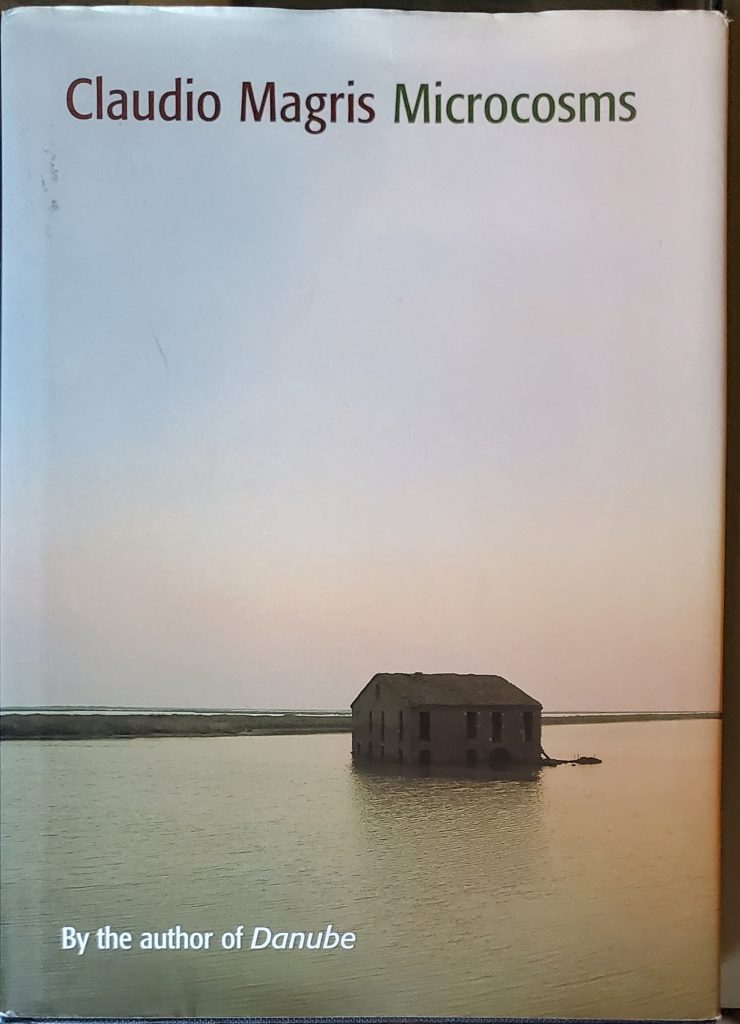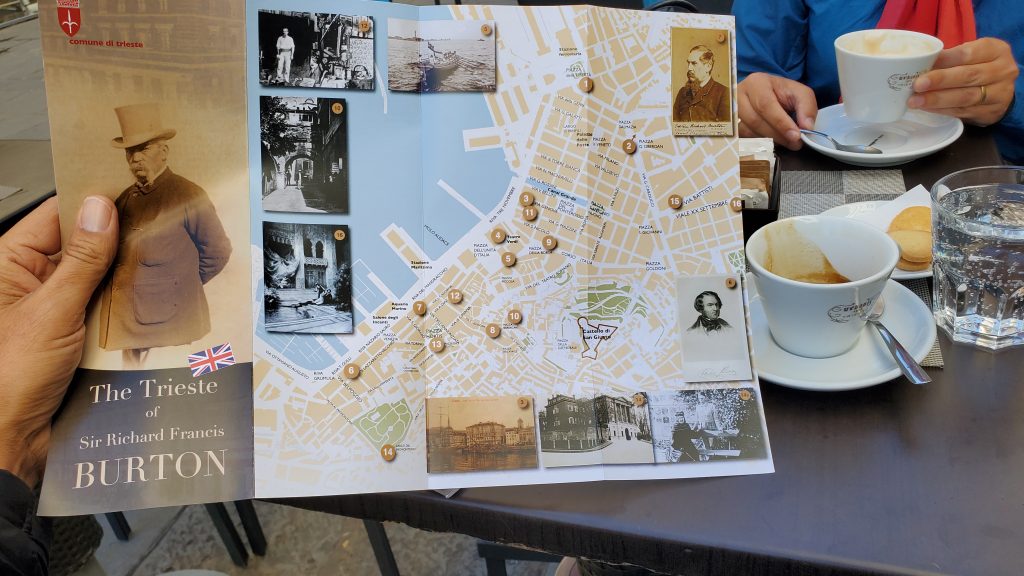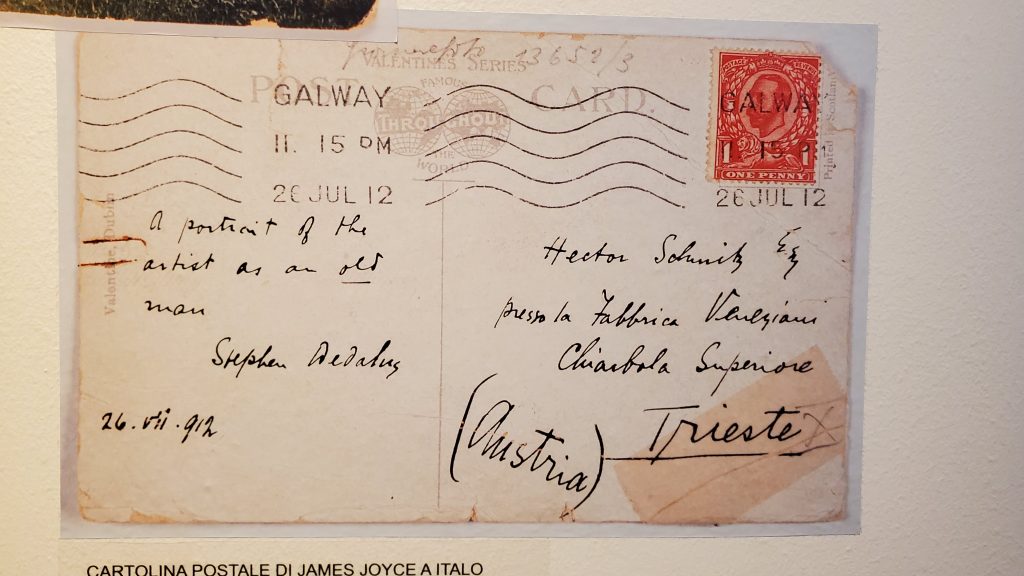by Gary Singh
My literary pilgrimage in Trieste took me from the Public Garden to the Joyce Museum. I did not need a Lonely Planet guide, so I relied upon the Claudio Magris book Microcosms to show me the way.
In the Public Garden, numerous gray statues of local authors sat on pedestals. In Chapter Eight of Microcosms, the narrator wanders in the garden, contemplating James Joyce’s passion for the Triestine dialect, which helped inspire Ulysses and Finnegan’s Wake.

In a now legendary letter Joyce wrote to Italo Svevo on January, 5, 1921, he experimented with the local dialect, referring to his new novel as “Ulisse ossia Sua Mare Grega.” Literally, the phrase in Italian translated to “his Greek mother” but in Triestine slang it meant “his whore of a mother.”
This was the best definition of Ulysses, wrote Magris’ narrator, connecting the book not just to the prostitutes of Trieste’s Greek colony, but to “all mothers and all seas, Greek or otherwise, promiscuous womb of myth, uterus of civilization from which are born the bastards who criticize one another’s respective ancestry.”

Even Maria Theresa, who originally expanded the port of Trieste, making it a prosperous place into which people of all types arrived to mix and rinse their origins, she too was a Great Mother, said Magris’ narrator. We all had mom to thank.
As someone of mixed origin myself, I never wanted to read Ulysses more than I did after reading those passages in Microcosms.
When I finally arrived at the Joyce Museum in Trieste, an enlarged facsimile of that same letter was on the wall. It was part of an entire exhibit of Joyce-Svevo correspondence.

Moments later, museum director Riccardo Cepach, a tall man with a bushy beard, showed up to answer my questions about the literary history of Trieste. The museum encompassed only a few small rooms, exactly why a larger facility was needed. As we sat down, Cepach explained why such a museum of literature was necessary for Trieste.
“Many authors, many experiences, many literary facts, are all talking about this very peculiar condition of this city,” he told me. “There are very few places where literature is so relevant in maybe four or five languages, where the level is very high. And many authors connected with Trieste wrote masterpieces, all over the world, in their own languages. Also, many of them were diplomats.”
For example, the French author Stendhal, under his real name Marie-Henri Beyle, was stationed in Trieste as the French Consulate from 1830 to 1831. The right-wing Austrian monarchy didn’t want him around. They spied on him, often intercepting his letters.
“He hated the place,” Cepach said. “The food, the people, the weather.”
In the 1920s, the future Nobel Laureate Ivo Andric was the vice-consul for the former Yugoslavia, back when it was called the Kingdom of the Serbs, Croats and Slovenes. In a building that still stood in Piazza Venezia, Andric set up shop while working on an autobiographical novel set in Trieste. Andric found in Trieste a similar frontier condition as that of his native Bosnia.
“He was a powerful writer,” said Cepach, emotion animating his face. “Every page. Powerful. I just love him.”
And then there was Sir Richard Francis Burton, the legendary explorer, translator and blasphemous troublemaker who spoke 25 languages and wrote 70 books. Burton eventually landed in Trieste as the British Consulate in 1872. During his time in Trieste, he completed translations of Asian classics like the Kama Sutra, the Perfumed Garden and the mammoth 12-volume Arabian Nights.
In the hallway outside, as one walked from the elevator to the Joyce Museum, several Burton posters graced the walls, including those from a documentary Cepach helped create in conjunction with a museum show.

“I organized an exhibition about him because the city almost forgot Richard Burton,” Cepach said.
As a result, there was now a tourist pamphlet with Burton-related sites in Trieste, including five different places where he worked as the consulate.
There were many other writers to talk about—Stuparich, Tomizza, Virgilio Giotti, who wrote in the Triestine dialect, and the poet Srecko Kosovel, the “Slovenian Rimbaud”—all of whom were memorialized in the Public Garden. More recently, Boris Pahor, the novelist and Holocaust survivor, had just passed away at the age of 108.
“You’re talking about original authors all over the place,” Cepach said. “Of course, everybody had their own point of view. Nobody felt the same. They were all isolated. They never created a movement or a group, there were no manifestoes, but now, looking back at those moments, now, it’s all so clear. It took a very, very long time to see the importance, Trieste’s importance, its place in modernist European literature.”

Yet there was still a long way to go. Right now, Cepach said, people were too focused on the Italian writers. Many more were worthy of inclusion. A larger facility was therefore necessary.
“I don’t want to write a book about this,” he said. “I would like to open a museum. Because a museum is a place. It would be the first place where a German author, an Italian author, and a Slovene author are all set in the same place. This would make it more clear, more evident. This is my goal.”
After leaving the Joyce Museum, I went back to the Public Garden and wandered around the gray statues, including many of the authors Cepach had just told me about. No other city memorialized its writers in quite such a fashion. I sat down near the Joyce statue to pay my final respects, as a pilgrim. I could rest assured that every Great Mother, Greek or not, was looking out for me.





























